How to Manage Chip Sealing
BY Sandy Lender
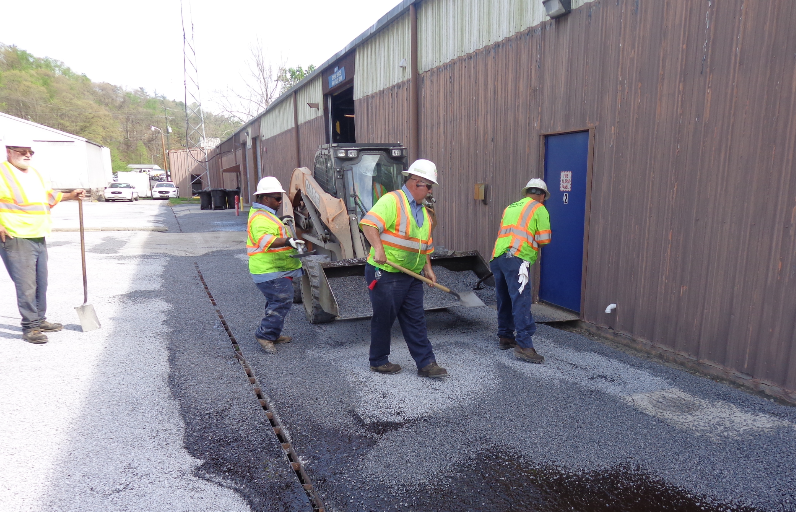
Two aspects of the chip sealing project keep it profitable for the company performing the work. Consider the management of the materials and the management of the process. For this delivery-themed issue of AsphaltPro, let’s take a look at the best practices for getting a chip seal project right, examining the way one crew in Virginia did it, with a focus on getting the materials down. The crew for Boxley, Blue Ridge, Virginia, did a great job of getting the spray rate of the tack and the spreading of the aggregate just right before kneading the surface with a static drum roller.
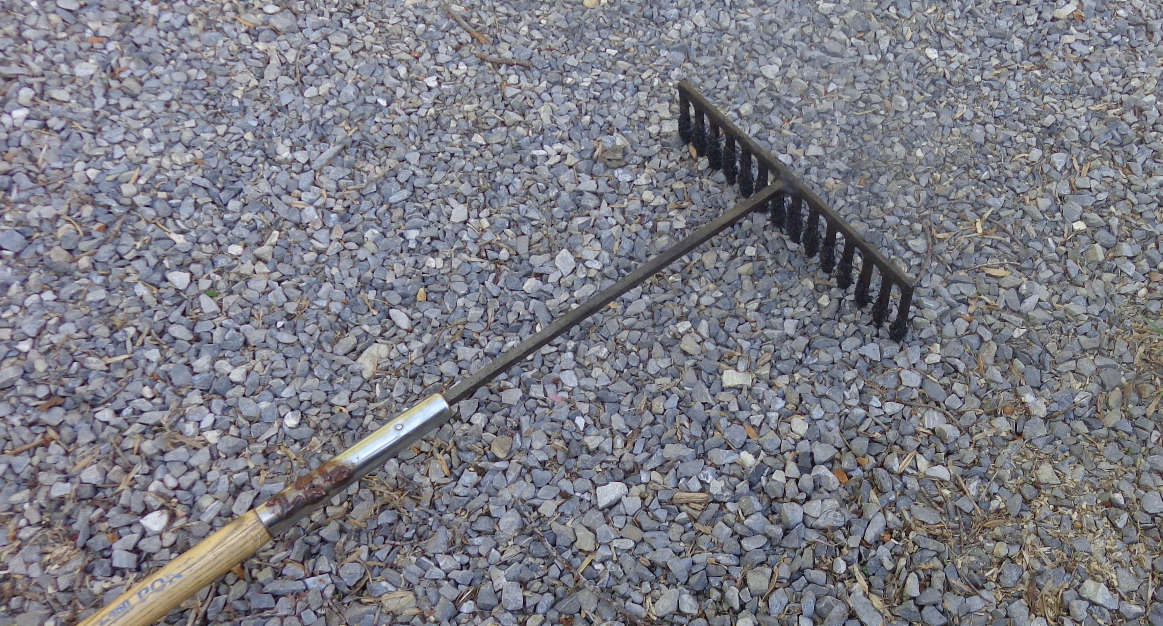
Workers use a special steel rake with strong tines/teeth that are straight up and down to perform this kind of handwork. This rake is heavy enough and its tines long and straight enough to knock over a pile of mix when the loader bucket dumps it for working in a small area. It can get in and drag large aggregate out of a pile to prevent material segregation in those small areas without getting clogged.
Quick Look at Machines
Richard Smith, western district territory manager for VT LeeBoy, headquartered in Lincolnton, North Carolina, explained that the distributor trucks and chip spreaders do the fine-tuned process these days. The tack wagon uses a processor-controlled system to get the spray rate correct; the chip spreader uses a monitored system to get the chip application rate correct. The crew takes care of the management of the pieces.
“If the distributor runs out, they don’t want to be waiting around,” Smith said. “They have a second truck there in the staging area waiting and ready to go.”
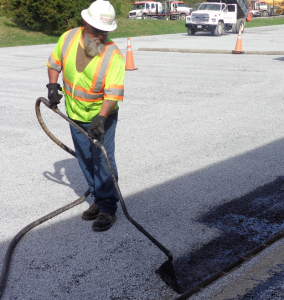
Perform handwork with the wand so you have control of the material. This worker from Boxley places tack precisely along the grate in the United Solutions parking lot. All photos courtesy John Ball, Top Quality Paving & Training, Manchester, New Hampshire.
Tack isn’t the only material to keep track of. When time is money, you want to keep a steady stream of haul trucks delivering aggregate to the chip spreader’s receiving hopper. “You want to know how long it’s going to take to bring the trucks from the chip source,” Smith advised. Once the tack is down, the chip spreader will follow, staying right up on the tack operation, keeping a steady distance between the tack wagon and chip spreader. If a haul truck of chips is late, the whole train comes to a stop. That costs money in laborers who are standing around waiting.
Ways to keep project costs under control include planning what machine to take to the job. Don Etnyre of E.D. Etnyre & Co., Oregon, Illinois, discussed the benefits of sealing full lane widths on rural roads where traffic is light and chip seals are a popular preservation tool. Rather than sealing one lane, setting back and sealing another, the crew has only one pass to make with the chip seal train—if the crew has the right equipment. A chip spreader with a variable hopper, for example, gives the crew flexibility. Like the extensions on a screed, the hopper “extends” hydraulically giving the crew more coverage with the veil of aggregate.
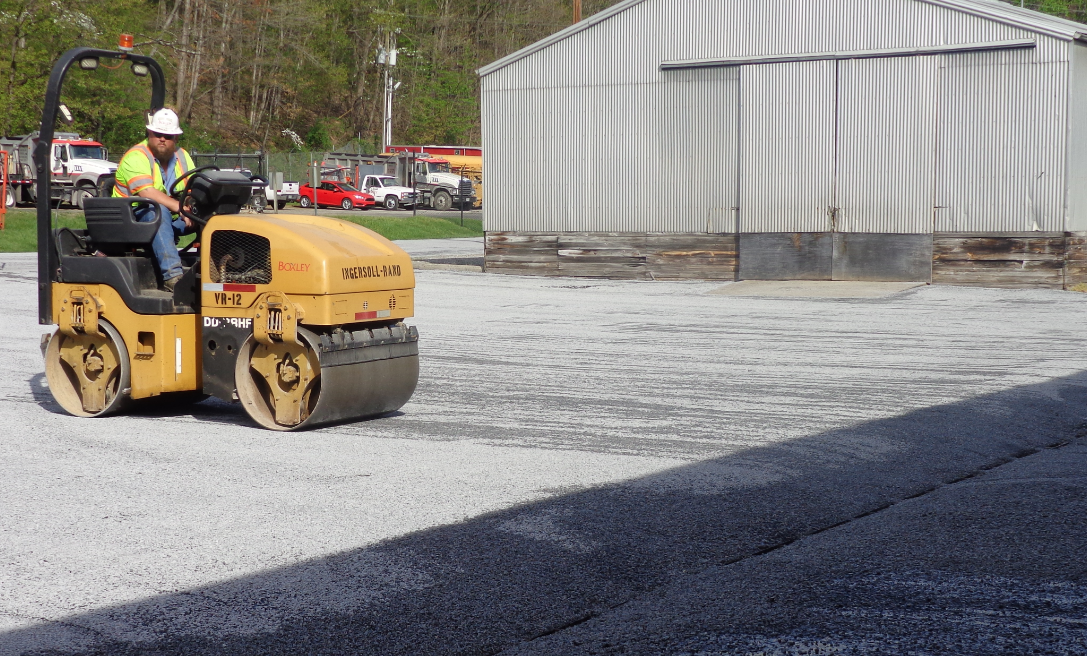
The roller operator seats the stone at the gutter so it won’t be in danger of washing away. This handwork and prep work takes place before the chip seal application.
“You can taper around mailboxes or at intersections,” Etnyre said. “The big benefit is you can go out 24 feet wide to seal shoulder to shoulder on one pass on the country roads, and then fold it down to 12 feet to haul it home.”
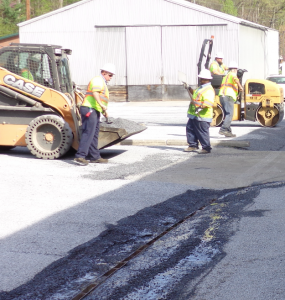
Ken Buckner is the foreman for this crew. Here he pulls stone from the loader’s bucket with a shovel to fill in a swale that had to be repaired before the chip seal application. It’s “working smarter” to bring the material to the area with a loader rather than trying to back a haul truck of stone—or asphalt mix—to a tight spot on the project.
With a variable machine, Etnyre explained, there is an auger in the hopper that assists in moving the material along the extended width. The key in this, as it is in any chip sealing application, is to get a uniform coverage of chips on the ground.
“Aggregate coverage needs to be uniform and complete,” Etnyre cautioned. “Neither piles nor missing areas is acceptable. Coverage is computer-controlled and measured by pounds per square yard.”
Let’s say the crew has an older machine, without the computer controls mentioned above. For the project Boxley performed earlier this year, the chip spreader available to them has been in the company for about five decades. That’s a testament to the old Etnyre chip spreader, and the excellent routine maintenance the company provides its equipment, but it means the crew must take the place of the processor controls Smith mentioned and turn into master planners for the chip coverage Etnyre discussed.
Consultant John Ball of Top Quality Paving & Training, Manchester, New Hampshire, helped Boxley with the chip seal job, and shared that the maintenance of the machines was exemplary. He also shared the steps the crew took to perform the job with both new and old equipment. Part of managing the successful chip seal treatment is getting the surface ready.

The crew needed to spread the stone about 12 feet wide near the building, out to the swale.
Prepare with Handwork
Prepare the surface for chip sealing with handwork. We all know to fill cracks in the pavement first. Ball reminds laborers to perform cutting in, and work that’s alongside buildings, grates, curbs and landscape features with a wand to give precise control of the material flow.
“You have more control of the tack when you can use the wand, rather than trying to back the tack wagon into the precise position, and lift or lower the spray bar in 1-foot increments,” Ball explained.
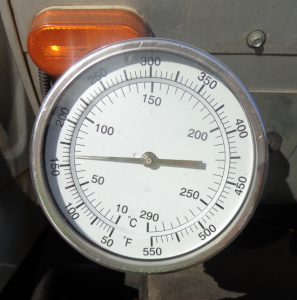
Spray tack when it’s about 160oF.
Handwork also includes distributing aggregate in some cases. The thin layer of aggregate that a chip seal delivers is not structural. By itself, the chip seal will not correct a low spot in the side road or adjust the slope in a section of parking lot for proper drainage. For these pavement corrections, the crew will perform handwork prior to the chip seal.
“You will want to spray tack with the wand and then build up the area or fill in a section with aggregate by hand,” Ball said. “Use the loader’s bucket to bring material to the area so you aren’t trying to maneuver a large vehicle in a small space.”
Depending on the project, you may place asphalt over this area as well. The final step in preparing for the chip seal will be to roll the areas you’ve built up or repaired. Then it will be ready for tack and chip.
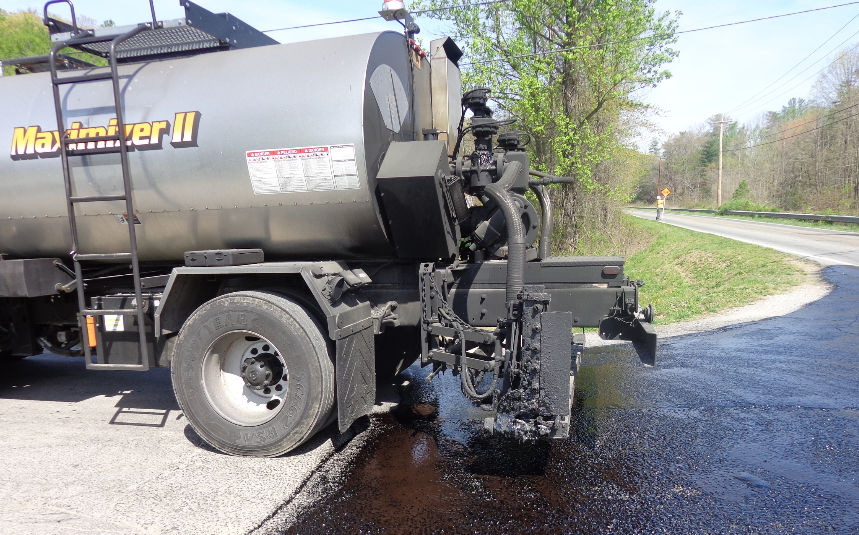
After the tack driver had sprayed the flare, he backed into position to spray the pass down the roadway.
Get Tacky
The tack will be hot; make sure all members of the crew are aware that they’ll be working around a sticky liquid that will reach temperatures of approximately 160oF. Those using the wand or working near the spray bar of the tack wagon must take safety seriously and wear the appropriate personal protective equipment (PPE), including long sleeves and long pants.
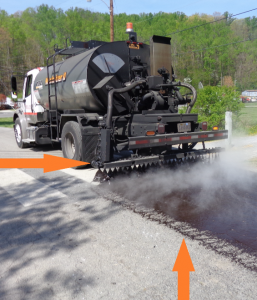
In this image, the top arrow pointing horizontally shows that the extension on the spray bar is raised in the upright position. The operator only needed to spray 10 feet wide in this pass. The lower arrow points out the small strip of tack that appears to be sparsely sprayed. This section of tack will be filled in when the truck comes back down the other way.
With safety covered, make the tack plan. Ball reminds workers to apply the tack to the width that will be covered with aggregate, and no more. That sounds logical, but the crew that oversprays will track sticky material all over the job site, creating headaches for themselves.
Agencies and owners have been looking at the tack used in chip seals over the years to determine how it can be regulated for optimum performance each and every time a chip seal is specified. During the Argus Asphalt Summit March 3, Jerry Peterson of Texas Department of Transportation (TxDOT) shared with the audience how his agency came up with a spec for chip seal binders.
For the TxDOT regimen—which includes the steps: plan it, build it, maintain it, use it and manage it—the agency uses chip seal, thin-bonded friction course, fog seal and microsurfacing as go-to items for pavement maintenance. In 2013, the state formed an emulsion task force with the goal of statewide implementation of an SPG spec for chip seal binders. TxDOT Implementation Project 5-6616 included researchers Darren Hazlett, Jerry Peterson, Amy Epps Martin, Edith Arambula, Tom Freeman and Jon Epps. Their objective was to improve chip seal binder specification and selection with performance-related tests at temperatures that cover the entire in-service range for a specific climate, while considering aging during the critical first year of the chip seal’s life and possibly adjusting for traffic load. The agency is hoping for implementation of the spec by the 2018 paving season.
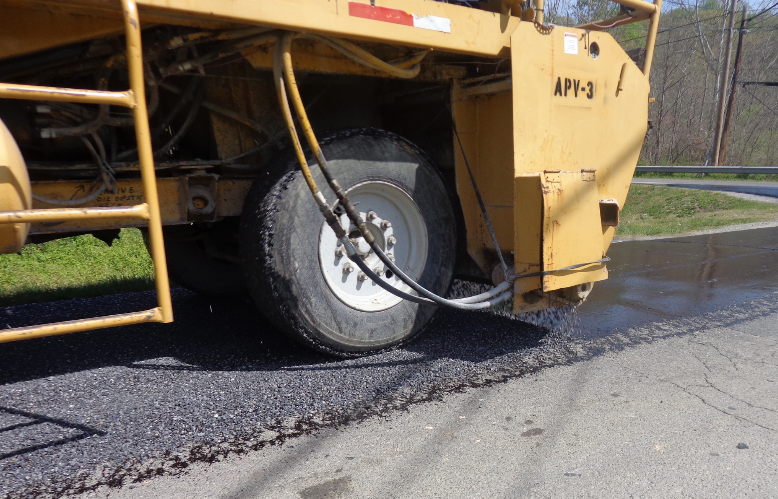
Aggregate goes down in a pretty, uniform veil.
How does a spec for binder in Texas affect everyone else? It gives all states a precedent for best practice when it comes to the tack in chip seals at varying temperatures and traffic loads. You’ll notice that the chip seal binder spec and selection in the TxDOT project pays close attention to the first year of the chip seal’s life. This makes sense for a number of reasons, including an agency’s desire to extend pavement life until a more robust pavement maintenance or preservation, structural enhancement can be performed. For example, in the 2016 project Boxley performed for United Solutions’ parking lot and adjoining roadway, Ball said the purpose was to extend pavement life.
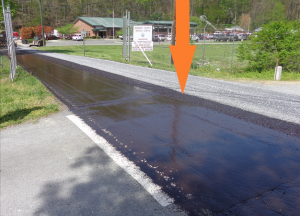
The arrow in this image points out the strip of tack that is “oversprayed” on the chip. Due to the 18-foot width of this section of roadway, the chip spreader had to make two passes. That means the tack wagon also made two passes to ensure good tack gave the aggregate good adhesion.
“We just sealed it to keep the life of the road for a couple more years,” he said.
If the owner wishes to extend the pavement life, you don’t want aggregate chipping out of inadequate and aging tack during that extension. You also want to prevent overspraying to the point you have too much tack on the surface. In the images here, you can see that the Boxley tack truck driver performed excellent passes with well-maintained nozzles on a clean spray bar. The tack, at 160oF, was thick enough leaving the nozzles to spray in a pleasing fan shape and not “run” on the pavement.
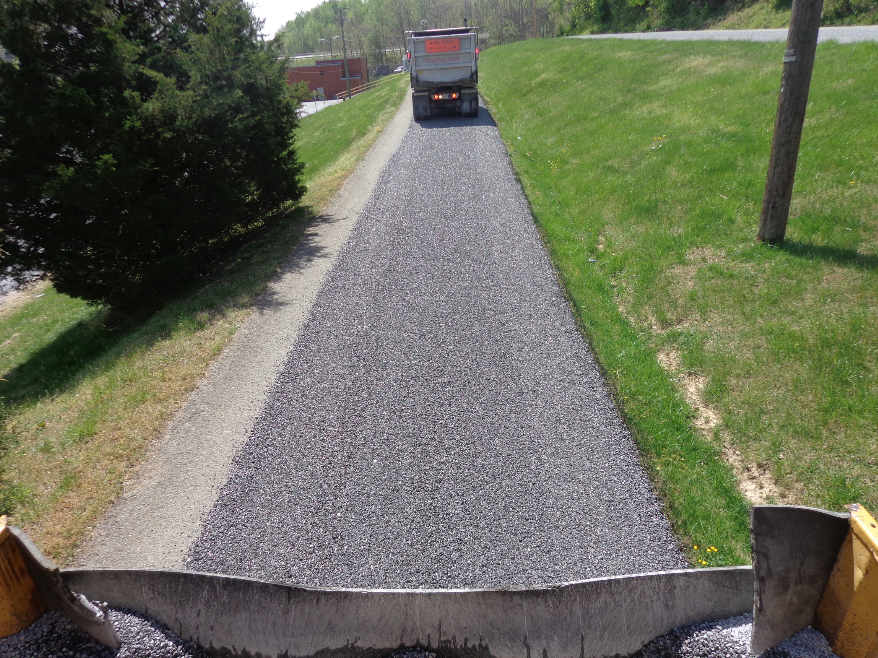
The completed roadway is ready for rolling to seat the chips.
Rock It
For the project Boxley performed, getting the aggregate down required careful planning due to the age of the machine they worked with. Its hopper is 10 feet wide. To chip seal the section of the project that was 18 feet wide, that required two passes, with a little creative spreading, as described in the photos. No matter what kind of chip spreader a crew uses, the aggregate is delivered to a receiving hopper. From there, the material is conveyed to the spreading hopper. Some machines use augers, some flow gates, to move and spread the aggregate out along the spreading hopper so it will fall in a uniform veil from this final hopper onto the tacked surface.

The project overall included an equipment parking lot, a maintenance shed lot and roadway.
Finally, a pneumatic tired—or steel drum roller in static mode—will roll the surface. The purpose of the roller is to seat the chips. Never put a vibratory roller on a chip seal. The vibration will merely break the aggregates and possibly damage the subbase. The rubber tires of the roller gently massage the chips into place—and that’s exactly what you want.
When it’s all cooled and rolled, you have a sealed surface that looks a bit like a gravel road, but travels smoothly. If you’ve done it well, the chips are seated firmly in place for a safe driving surface that gives the owner/agency an extended life for the pavement.
